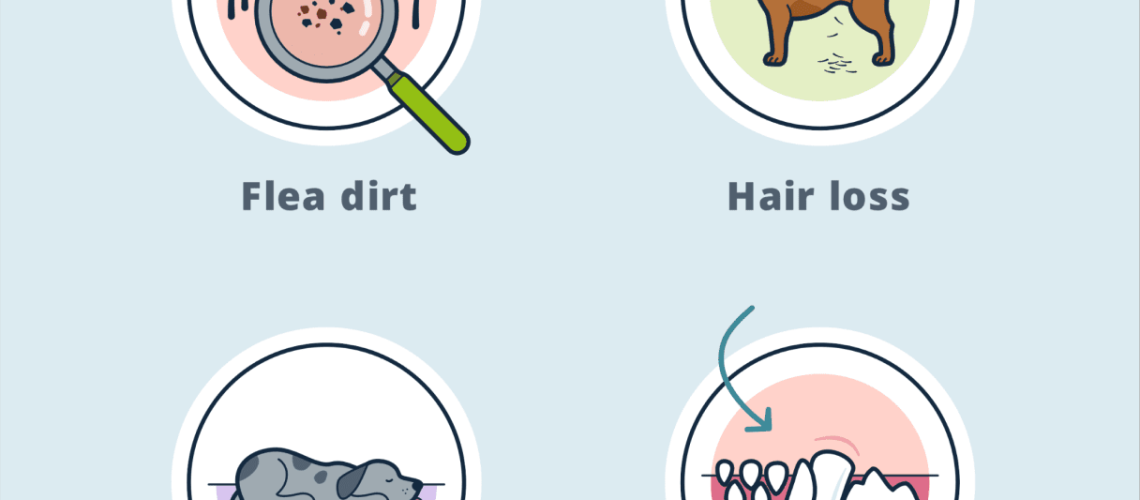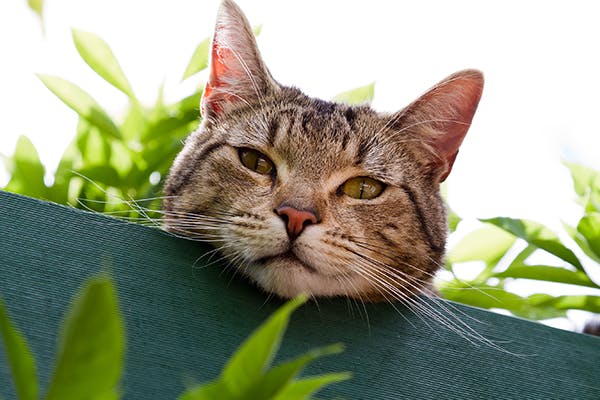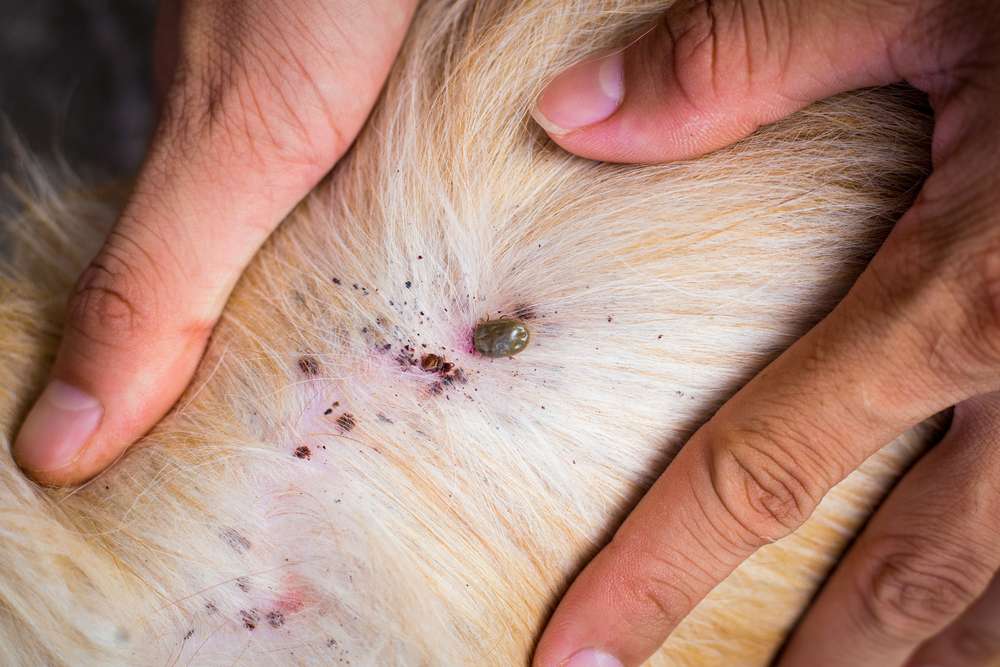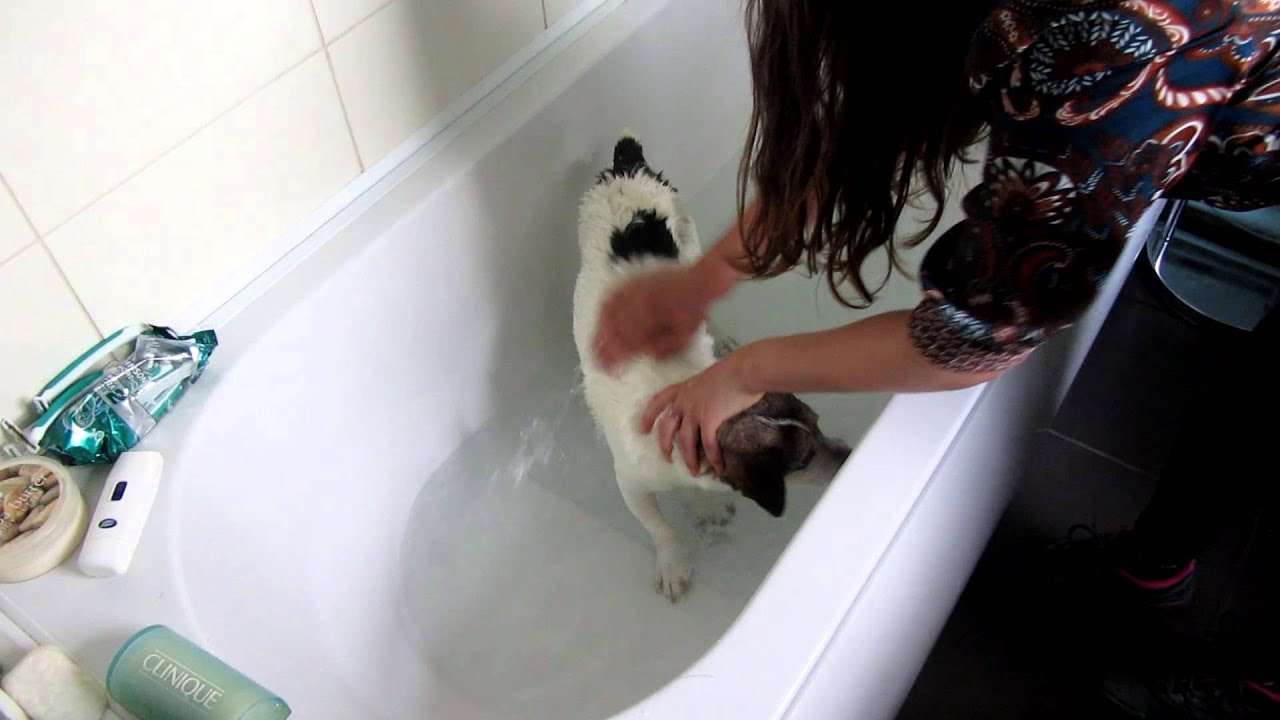Key Takeaways:
- Fleas are a common problem in cats and can cause a range of issues including itching, skin infections, and even anemia.
- Regular grooming and inspection of your cat's fur can help identify fleas early on.
- Treating both your cat and their environment is essential to effectively eliminate fleas.
- There are various flea prevention products available such as topical treatments, oral medications, and collars that can help protect your cat from infestations.
- If you suspect your cat has fleas, it is important to consult with a veterinarian for proper diagnosis and treatment options.
Attention all cat owners! Are you tired of seeing your furry friend scratching and itching uncontrollably? Do you want to protect your beloved pet from the pesky parasites known as fleas? Well, look no further because we have the ultimate guide for you: Flea Frenzy: How to Spot and Stop Them in Cats. In this comprehensive article, we will uncover the secrets to identifying and eliminating these tiny troublemakers that can wreak havoc on your cat's health and happiness. Understanding this topic is not only essential for your cat's well-being but also for maintaining a clean and comfortable home environment. So, prepare yourself for a journey into the world of fleas as we equip you with the knowledge and tools to tackle this problem head-on. Get ready to bid farewell to those itchy irritants once and for all!
What is Flea Frenzy: How to Spot and Stop Them in Cats about?
Flea Frenzy: How to Spot and Stop Them in Cats is a comprehensive guide that aims to help cat owners understand and deal with flea infestations. Fleas are tiny, wingless insects that feed on the blood of animals, including cats. They can cause discomfort, itching, and even transmit diseases to your furry friend. This guide will provide you with valuable information on how to identify if your cat has fleas, the signs of infestation, and steps you can take to prevent fleas from affecting your cat's health.
Why fleas are a problem for cats?
Fleas are not only annoying but also pose a significant health risk for cats. When fleas bite, they inject saliva into the cat's skin which can cause itching and allergic reactions. Some cats may develop flea allergy dermatitis (FAD), a condition characterized by intense itching and skin inflammation. If left untreated, FAD can lead to secondary infections or other complications.
In addition to the discomfort they cause, fleas can also transmit parasites like tapeworms to cats. These worms live inside the intestines of infected animals and can cause weight loss, diarrhea, and other digestive problems in cats.
How can you tell if your cat has fleas?
Spotting fleas on your cat may not always be easy since they are fast-moving and small in size. However, there are several signs that can indicate a flea infestation:
- Your cat excessively scratching or grooming itself
- Tiny black specks (flea dirt) on your cat's fur
- Red bumps or sores on your cat's skin
- Visible fleas or flea eggs on your cat's fur
If you notice any of these signs, it is important to take immediate action to prevent the infestation from worsening and affecting your cat's health.
Common signs of flea infestation in cats
Flea infestations can cause various symptoms in cats. Some common signs include:
- Intense itching and scratching, especially around the neck, tail, and back
- Excessive grooming or licking, leading to hair loss or bald patches
- Redness or inflammation of the skin
- Tiny red bumps or scabs on the skin
- Restlessness or irritability
- Lethargy or decreased activity levels
- Visible presence of fleas or flea dirt on the cat's fur
Steps to prevent fleas from affecting your cat
Preventing flea infestations is crucial for maintaining your cat's health. Here are some steps you can take:
- Maintain a clean living environment by regularly vacuuming carpets, furniture, and bedding.
- Frequently wash your cat's bedding using hot water to kill any existing fleas.
- Treat all pets in your household with veterinarian-recommended flea prevention products.
- Avoid contact with stray animals that may carry fleas.
Natural remedies to get rid of fleas on cats
If you prefer natural methods to deal with fleas, there are several options available:
- Regularly comb your cat's fur with a fine-toothed flea comb to remove adult fleas.
- Use a mixture of diluted apple cider vinegar and water as a natural flea repellent spray.
- Create a flea-repelling herbal bath by steeping rosemary, lavender, or chamomile in warm water and using it to wash your cat.
Fleas: Can they affect humans too?
While fleas are primarily parasites of animals, they can also bite humans. Flea bites on humans typically appear as small red bumps surrounded by a red halo. The bites can be itchy and cause discomfort. In rare cases, fleas can transmit diseases like murine typhus or bubonic plague to humans, although such instances are extremely uncommon.
Why fleas are a problem for cats?
Fleas can be a major problem for cats. These tiny parasites feed on the blood of animals, including cats, and can cause a range of health issues. When fleas bite, they inject saliva into the cat's skin, which can lead to itching and discomfort. Some cats may develop an allergic reaction to flea saliva, resulting in intense itching and even hair loss. In severe cases, excessive scratching can lead to open sores or secondary bacterial infections. Additionally, fleas can transmit diseases such as Bartonella (also known as cat scratch fever) and tapeworms. Therefore, it is crucial to address flea infestations promptly to ensure the well-being of your feline friend.
Health Risks Associated with Flea Infestations
Flea infestations not only cause discomfort but also pose various health risks for cats. One common issue is flea allergy dermatitis (FAD), an allergic reaction triggered by flea bites. Cats with FAD experience intense itching and may develop skin lesions or hot spots due to excessive scratching. Moreover, if a cat ingests fleas while grooming themselves, they may become infected with tapeworms. These parasites reside in the intestines and can lead to weight loss, diarrhea, and general weakness in affected cats.
Preventing Flea Infestations
Prevention plays a crucial role in keeping your cat free from fleas. Regularly using flea preventatives recommended by your veterinarian is essential. These products come in various forms such as topical treatments or oral medications that kill fleas at different stages of their life cycle. Additionally, maintaining cleanliness in your home environment is important as it reduces the likelihood of flea eggs hatching and developing into adult fleas. Vacuuming carpets and upholstery regularly helps remove flea eggs and larvae while washing your cat's bedding in hot water can eliminate any fleas or eggs present.
How can you tell if your cat has fleas?
Detecting fleas on your cat may require some observation and close examination. One of the most common signs is excessive scratching or grooming behavior. If you notice your cat constantly scratching, biting, or licking certain areas of their body, it could indicate the presence of fleas. Another clue is the appearance of small black specks on your cat's fur, known as flea dirt. Flea dirt is actually flea feces and consists of digested blood that fleas excrete. To confirm whether these specks are flea dirt, place them on a damp paper towel – if they turn reddish-brown due to the presence of blood, it confirms the presence of fleas.
Checking for Fleas
To check for fleas directly, part your cat's fur and examine their skin for any tiny brown insects moving around. Fleas are about 1-4 millimeters long and have a flat body shape that allows them to move quickly through fur. Pay close attention to areas where fleas tend to hide, such as behind the ears, along the neck, and at the base of the tail. Using a fine-toothed comb designed specifically for removing fleas from cats can also help in detecting these pesky parasites.
Other Indicators of Flea Infestation
Apart from visible signs on your cat's body, there are other indicators that suggest a flea infestation. If you notice small red bumps or sores on your own skin after interacting with your cat, it could be a sign that fleas have bitten you too. Additionally, if you find flea dirt or actual fleas in your cat's bedding or favorite resting spots around the house, it indicates an infestation that requires immediate attention.
Common signs of flea infestation in cats
Fleas are a common problem that can affect our feline friends. If you suspect your cat has fleas, there are several signs to look out for. One of the most obvious signs is excessive scratching or biting at the skin. Cats may also develop red, irritated skin or small bumps known as flea allergy dermatitis. Another telltale sign is the presence of tiny black specks on your cat's fur, which are actually flea dirt (feces). You may also notice hair loss or scabs on your cat's skin.
To determine if your cat has fleas, you can use a fine-toothed comb to check for live fleas or flea dirt. Comb through your cat's fur, paying close attention to areas such as the neck, back, and tail base where fleas tend to gather. If you find any evidence of fleas, it's important to take immediate action to prevent further infestation and discomfort for your cat.
How to check for flea dirt:
- Comb through your cat's fur with a fine-toothed comb.
- Collect any black specks that fall onto a white paper towel or tissue.
- Dampen the specks with water and observe if they turn reddish-brown (indicating flea dirt).
Tips:
- Regularly groom your cat with a flea comb to help detect any early signs of infestation.
- Keep an eye out for excessive scratching or changes in behavior that may indicate a flea problem.
Steps to prevent fleas from affecting your cat
Prevention is key when it comes to keeping your cat flea-free. By taking a few simple steps, you can greatly reduce the risk of flea infestation in your home and on your beloved feline companion.
First and foremost, it's important to keep your cat's environment clean. Vacuuming regularly and washing bedding in hot water can help eliminate any fleas or eggs that may be present. Additionally, consider using a flea control product recommended by your veterinarian to protect your cat from future infestations.
Tips for preventing fleas:
- Keep your cat indoors to minimize exposure to fleas.
- Regularly vacuum carpets, furniture, and other areas where fleas may hide.
- Wash your cat's bedding frequently in hot water.
- Use a veterinarian-recommended flea control product on your cat.
Natural remedies to get rid of fleas on cats
If you prefer natural alternatives for treating fleas on your cat, there are several options available that can be effective without the use of harsh chemicals. One popular natural remedy is diatomaceous earth, which is a fine powder made from fossilized algae. When applied to your cat's fur, diatomaceous earth dehydrates and kills fleas.
Another natural option is using essential oils such as lavender or cedar oil. These oils have insect-repellent properties and can be diluted with water or carrier oil before applying them to your cat's fur. However, it's important to note that some essential oils can be toxic to cats, so always consult with a veterinarian before using them.
Natural remedies for flea control:
- Apply food-grade diatomaceous earth onto your cat's fur, avoiding the face.
- Dilute a few drops of lavender or cedar oil in water or carrier oil and apply it to your cat's fur.
- Use a flea comb to remove any dead fleas or debris from your cat's fur.
Tips:
- Always consult with a veterinarian before using any natural remedies on your cat.
- Monitor your cat for any signs of irritation or adverse reactions after applying natural remedies.
Fleas: Can they affect humans too?
While fleas are primarily known for infesting cats and dogs, they can also affect humans. Although human infestations are less common, it's still important to be aware of the potential risks and take necessary precautions.
Fleas can bite humans, causing itchy red bumps similar to mosquito bites. In some cases, individuals may develop an allergic reaction to flea bites, resulting in more severe symptoms such as swelling and hives. Additionally, fleas can transmit diseases such as murine typhus and bubonic plague, although these cases are extremely rare.
Tips for preventing flea bites:
- Avoid areas with known flea infestations, such as heavily wooded areas or homes with untreated pets.
- Wear long sleeves and pants when spending time outdoors in potentially infested areas.
- Apply insect repellent containing DEET to exposed skin to deter fleas.
Note:
If you suspect you have been bitten by fleas or have concerns about potential flea-borne diseases, it is recommended to seek medical advice from a healthcare professional.
In conclusion, fleas are tiny parasites that can cause discomfort and health issues for cats. By regularly checking for signs of fleas and using appropriate prevention methods, such as flea treatments and keeping the environment clean, we can help keep our feline friends safe and flea-free.
Can you give a cat a flea tablet and spot on?
Is it safe to use multiple flea treatments at the same time? It is generally not advised to use different flea treatments together unless a veterinarian specifically recommends it. Flea treatments come in various forms, including spot-on treatments, shampoos, oral medications, and sprays, and each may contain different active ingredients.
What is the fastest way to get rid of fleas on a cat?
The most effective method for eliminating fleas quickly is by using oral or topical medications specifically designed to kill adult fleas, as well as their eggs and larvae. Certain products can start working within a few hours.
How do I stop fleas jumping on my cat?
To prevent fleas, it is important to regularly vacuum and wash your pets' bedding. If you suspect fleas, it is crucial to treat your home as well. Your veterinarian can provide guidance on the most suitable products to use, taking into account the animals under your care.
Can you crush flea tablets for cats?
If it is safe to mix pills with food, you can crush the pill and mix the powder with their regular wet food or kibble. It is important to note that not all medications can be crushed, and you should be cautious to prevent other pets from consuming the medicated food.
How do I get rid of fleas on my cat in one day?
In addition to eliminating other potential illnesses, your veterinarian can provide treatments that will eliminate fleas on your pet within 24 hours, according to Dr. de Jong. Afterward, your veterinarian will likely advise you to use a reliable product to prevent ticks and fleas from returning.
What kills all stages of fleas on cats?
Treating all pets monthly and maintaining a clean environment is recommended in order to break the flea life cycle, which can take up to three months. A study conducted by The Ohio State University found that vacuuming can eliminate up to 96% of adult fleas and all stages of immature fleas.

















